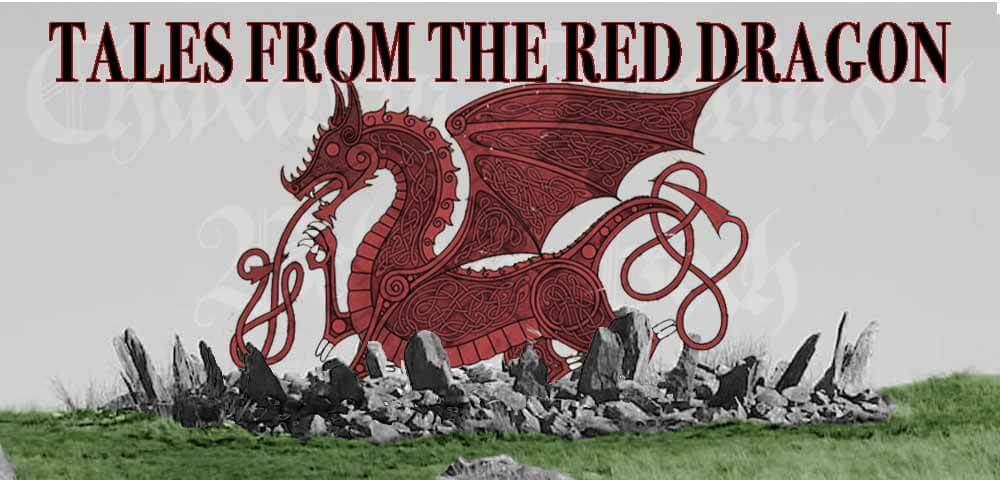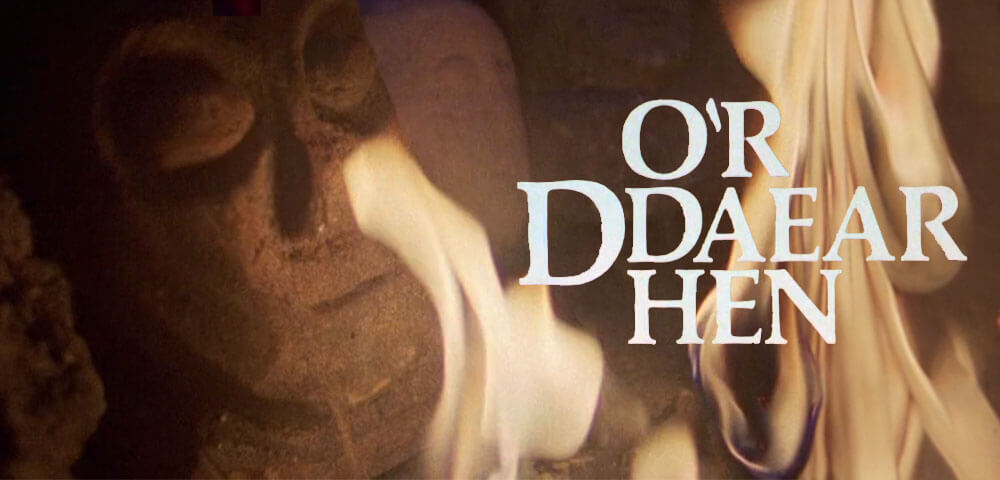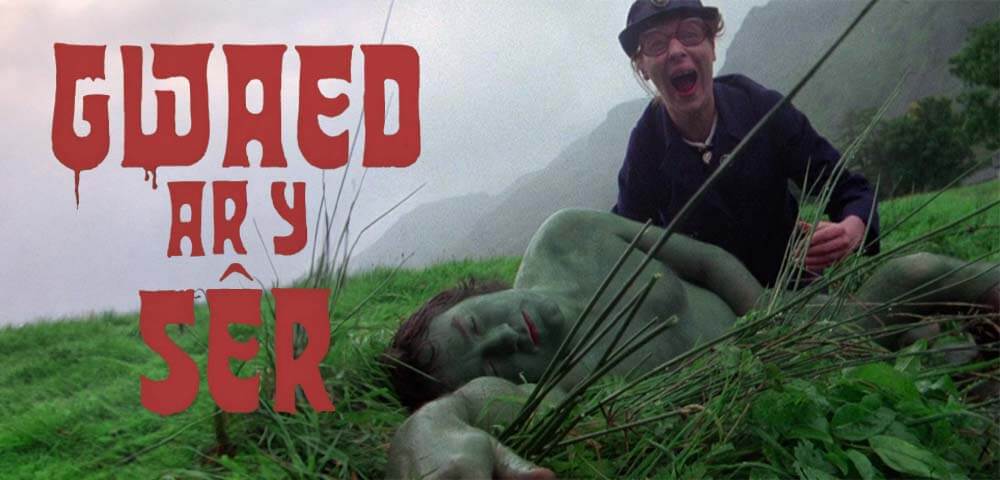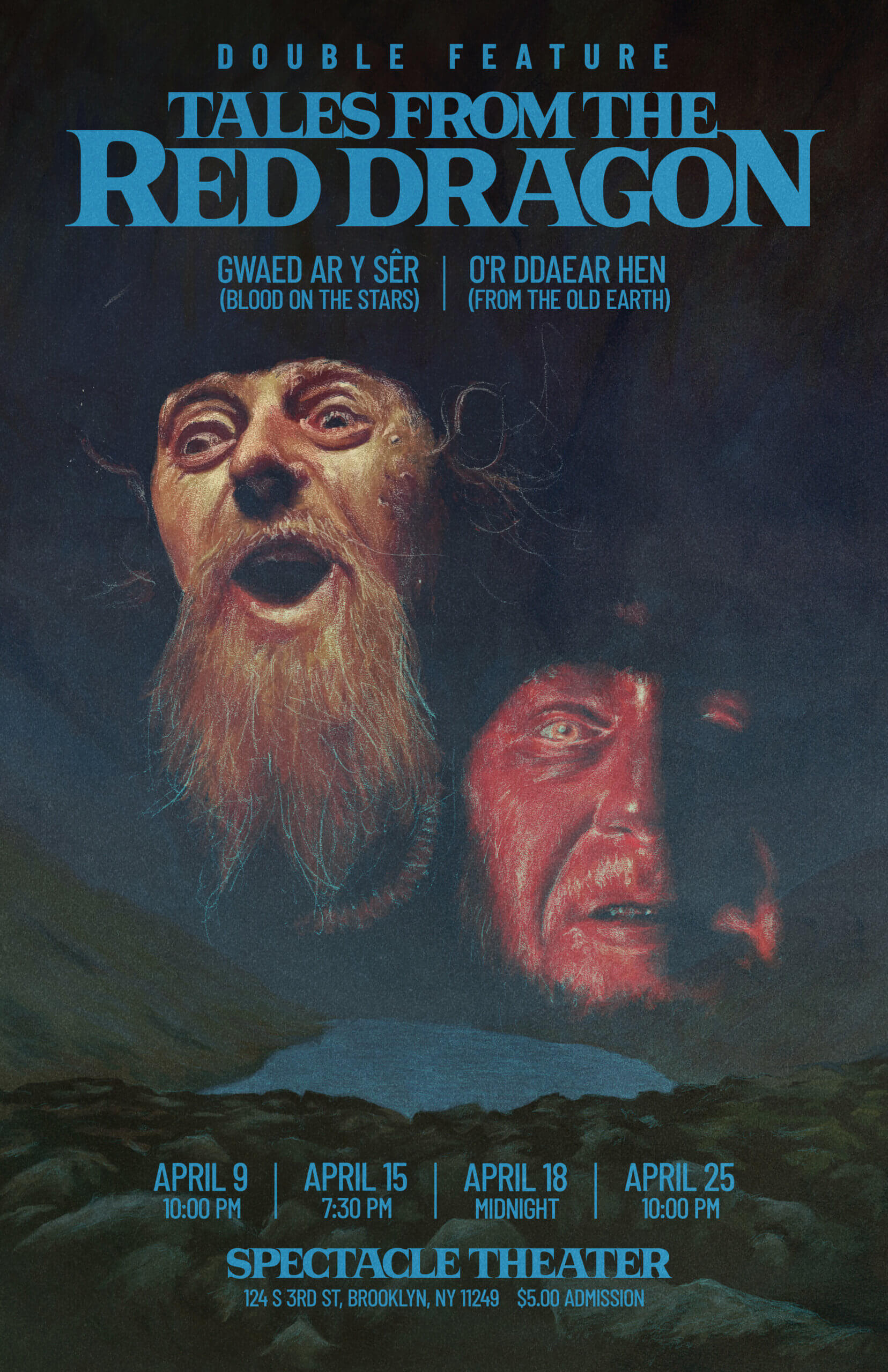
Playing as a double bill:
WEDNESDAY 4/9 – 10PM
TUESDAY 4/15 – 7:30PM
FRIDAY 4/18 – MIDNIGHT
FRIDAY 4/25 – 10PM
The history of Welsh language film and television has been fraught with challenges, including persistent underfunding and a lack of effective film infrastructure. These obstacles have been compounded by the British government’s reluctance to prioritize Welsh culture and language in media, leading to insufficient support for Welsh-language projects. Additionally, there has been a notable hesitation among British distributors to handle Welsh-language films, which has further restricted their ability to reach larger international audiences. Director Wil Aaron stated in the Welsh magazine Barn “There will be no further developments in Welsh-language film until the BFI is persuaded that the Welsh have as much right as the English to their own celluloid culture”. This sentiment sparked Aaron to create the independent Welsh language television company Ffilmiau’r Nan in 1976.
In 1952, when the BBC launched a transmitter in Glamorgan, Welsh-language television programming was minimal, peaking at just half an hour per week by 1957. The establishment of BBC Wales in 1962 allowed a slight increase to six to seven hours weekly, yet the struggle for substantial recognition and funding persisted. Throughout the 1970s, the campaign for a dedicated Welsh-language channel gained traction, driven by groups like Cymdeithas yr Iaith Gymraeg and Plaid Cymru. However, political pledges made by parties were often unfulfilled, with Thatcher’s Conservative government initially backtracking on commitments made during the 1979 elections. This led to significant unrest, culminating in a protest by Gwynfor Evans, who threatened to fast until the promise of a Welsh channel was realized, dramatized in the 2023 film Y SWN.
During this same period, Welsh-language films were virtually nonexistent, prompting the establishment of the Welsh Film Board (Bwrdd Ffilmiau Cymraeg) in 1971 to promote Welsh-language cinema. Unfortunately, the British Film Institute (BFI) perceived the WFB as a ‘language activity rather than a film project,’ leading to inadequate funding for its initiatives. Filmmaker Wil Aaron, a member of the WFB, produced four films with their support, including two featured in this retrospective, but he remained disillusioned with the organization’s approach, famously stating, “The board has no expertise, no experience of the film.”
In 1982 the Welsh language television channel S4C (Sianel Pedwar Cymru – Channel Four Wales) was finally established, broadcasting 22 hours a week, mostly in primetime slots, and giving Welsh language programming priority over English language shows. Through his television company Ffilmiau’r Nant, Wil Aaron started producing content for the channel very early on, including shows such as ALMANAC (1982 – 1986), C’MON MIDFIELD! (1988 – 1994) and DERYN (1986 – 1992). In his book Wales and Cinema: The First 100 Years, David Berry states that ‘Aaron’s Caernarfon-based company Ffilmiau’r Nant has become one of S4C’s most prolific independent suppliers of films.’
Today, S4C continues to thrive, broadcasting 115 hours of Welsh-language content each week, including news broadcasts and original programming. Despite this robust output, Welsh-language cinema remains underrepresented, with films still struggling to achieve widespread distribution, and filmmakers often facing challenges securing adequate funding for their projects. Nevertheless, there have been notable successes in Welsh-language cinema recently, particularly with the release of the critically acclaimed film THE FEAST (2021). This success underscores the vibrant creativity present in Welsh cinema and the appetite for it when it is supported effectively.
This April, Spectacle proudly presents two of Wil Aaron’s Welsh-language films produced through the Welsh Film Board: O’R DDAEAR HEN (FROM THE OLD EARTH) (1981) and GWAED AR Y SER (BLOOD ON THE STARS) (1975).
O’R DDAEAR HEN
(FROM THE OLD EARTH)
Dir. Wil Aaron, 1981.
Wales. 47 min.
In Cymraeg with English Subs.

William Jones discovers an ancient Celtic stone head in his garden with horrifying consequences. Can the local archeologists help him shake this ancient curse?
O’R DDAEAR HEN is steeped in Welsh folklore and tradition and is probably the first true horror film to be produced in the Welsh language. In Wales and Cinema: The First 100 Years Berry states ‘the film is a work of undoubted flair’. The plot echoes the classic ghost stories of M.R. James, featuring an unsuspecting character who unearths an ancient artifact, only to find that the past has come back to haunt them. Although the quality of films from the Welsh Film Board was often scrutinized, even by Aaron himself, O’R DDAEAR HEN shines as a beacon of quality and would seamlessly fit into the BBC’s original run of A GHOST STORY FOR CHRISTMAS (1971-1978).
The film was one of Aaron’s first works showcased on S4C, the newly created Welsh-language television network in 1982. While it received acclaim, not all screenings were met with positivity. One mission of the Welsh Film Board was to expose children to the Welsh language, which involved organizing school trips for primary school children aged between five and eleven to view their latest films. The school trip to watch O’R DDAEAR HEN has become notorious for traumatizing a generation of kids. Mari Williams, one such child now in her forties, reminisced about her experience in a BBC article, stating, “I remember lying in my bed that night numb with fear, certain that a man with horns was standing outside the bedroom.”
GWAED AR Y SER
(BLOOD ON THE STARS)
Dir. Wil Aaron, 1975.
Wales. 60 min.
In Cymraeg with English Subs

Welsh celebrities from all over the country are scheduled to perform at a local talent show, however, they start turning up dead in increasingly bizarre ways.
GWAED AR Y SER was Wil Aaron’s third film made with support from the Welsh Film Board, after HEN DYNNWR LLUNIAU (THE OLD PHOTOGRAPHER) and SCERSLI BILIF (SCARCELY BELIEVE). Aaron masterfully walks the line between horror and the blackest of comedy to create a charming, but perhaps somewhat deranged, film. Regarding GWAED AR Y SER Berry wrote “Aaron delivers the robust gags, the shameless ironies and the shocks with such gusto.”
This achievement becomes even more remarkable given the meager budget of only £6,000, provided by the Welsh Film Board, and given a shooting schedule of just ten days. Many of the actors are locals from Nantperis, with most of the celebrity appearances being friends of Aaron’s from his years in broadcast TV.
The Welsh Film Board also screened this film for primary school children in 1975. While it did not provoke the same level of outcry as O’R DDAEAR HEN, it still managed to traumatize some schoolchildren and received multiple complaints from parents. Aaron commented, “The problem with Welsh films at that time, was that everyone assumed they were the kind of thing that was shown in Sunday School. Did no one consider that there might not be a little bit of sex and a little bit of fear in them…”
This 2K restoration was produced by Severin Films with the support of Matchbox Cineclub. It was restored using the original camera negative and original mono track negatives. All the elements were provided courtesy of the Bwrdd Ffilmiau Cymraeg/Welsh Film Board collection at the National Library of Wales Screen and Sound Archive.

